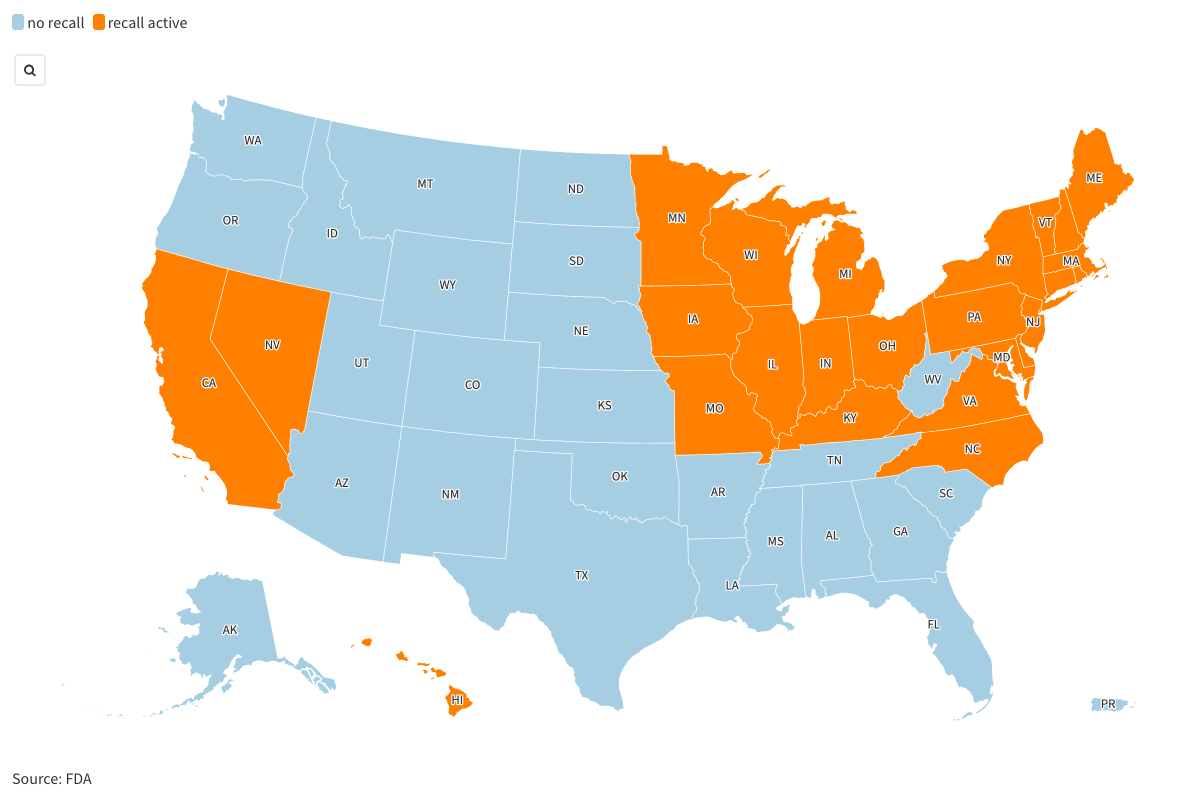The expansion of China’s capabilities came as SIPRI warned that even as the total number of nuclear warheads around the world was declining as Cold War-era weapons were phased out, there were steady year-on-year increases in the number of operational warheads that could be used quickly in the event of conflict.
Around 2,100 deployed nuclear warheads are being kept in a state of “high operational alert” on ballistic missiles — and while almost all belonged to Russia or the United States, China was believed to have placed some warheads on this level of alert for the first time, SIPRI found.
GET CAUGHT UP
Stories to keep you informed
Hans M. Kristensen, director of the Nuclear Information Project at the nonprofit group Federation of American Scientists and an associate senior fellow with SIPRI, said in a statement that China was “expanding its nuclear arsenal faster than any other country” but added that “in nearly all of the nuclear-armed states there are either plans or a significant push to increase nuclear forces.”
SIPRI’s estimates aligned with figures recently included in a Pentagon report to Congress, which stated that China probably had “more than” 500 operational nuclear warheads by May and was “on track to exceed previous projections.”
At a recent conference on nuclear disarmament, a senior Biden administration official warned that the United States might need to deploy a greater arsenal of nuclear weapons if rivals such as Russia and China continue on this path.
“Absent a change in the trajectory of adversary arsenals, we may reach a point in the coming years where an increase from current deployed numbers is required,” Pranay Vaddi, a National Security Council official who specializes in nuclear weapons, said at an annual meeting of the Arms Control Association in Washington this month.
China had for years maintained a relatively small arsenal of about 200 warheads, but it has been shoring up that stockpile “very quickly” in recent years, said Tong Zhao, a senior fellow with the Nuclear Policy Program and Carnegie China at the Carnegie Endowment for International Peace who was not involved in SIPRI’s research.
Beijing denies that it is in the middle of a major nuclear buildup, but based on the current trajectory, it could have more than 700 warheads by 2027 and 1,000 by the end of the decade, Zhao said, assuming growth continues at its current pace.
The 2030 estimate would still be less than a fifth of the current size of the U.S. inventory, which, according to the SIPRI report, was 5,044 warheads as of January. Russia has 5,580, according to the report.
“Personally, I don’t think China has made the decision to reach nuclear parity with the United States,” Zhao said. “But I understand that many American experts already assume nuclear parity is the goal of the Chinese expansion.”
The quiet buildup of China’s nuclear arsenal comes as various conflicts continue to rage around the world, including the wars in Ukraine and Gaza. The war in Ukraine has had a “negative impact” on nuclear arms control talks and has “diminished opportunities to break the long-standing deadlock in nuclear arms control and reverse the worrisome trend of nuclear-armed states developing and deploying new weapon systems,” SIPRI stated in the report.
Speaking at the arms control event in Washington this month, Vaddi said that China, along with Russia and North Korea, were “expanding and diversifying their nuclear arsenals at a breakneck pace, showing little or no interest in arms control.”
He added that the three countries, as well as Iran, were “increasingly cooperating and coordinating with each other — in ways that run counter to peace and stability, threaten the United States, our allies and our partners, and exacerbate regional tension.”
Among China’s recent efforts is the development of a nuclear triad capability — growing its number of submarines and adding an airborne element, in addition to existing land-based launch capabilities, Zhao said.
“This is a major change,” Zhao said, “because historically China criticized the United States and Russia for maintaining a triad.”
China is also for the first time believed to have deployed a small number of warheads during peacetime — readying them on missiles rather than storing them separately from the vehicles that can volley them toward a target, according to SIPRI. Of China’s 500 warheads, 24 were deployed as of January, according to the report — less than 5 percent of its stockpile.
By comparison, the United States had readied nearly half of its warheads, with 1,770 of the 3,708 warheads in its stockpile deployed (its inventory of 5,044 warheads includes the stockpile as well as warheads that are set to be dismantled).
Zhao said that it’s not apparent what’s behind the recent changes in Beijing’s nuclear posturing. “My own research makes me believe that recent Chinese nuclear expansion is not driven by clearly defined military objectives,” he said.
Rather, he said, it seems that Chinese President Xi Jinping believes that stronger strategic capabilities will impact the West’s perception of China, possibly convincing the United States and others to treat China as “an equally powerful country that deserves respect — deserves to be treated equally.”

















